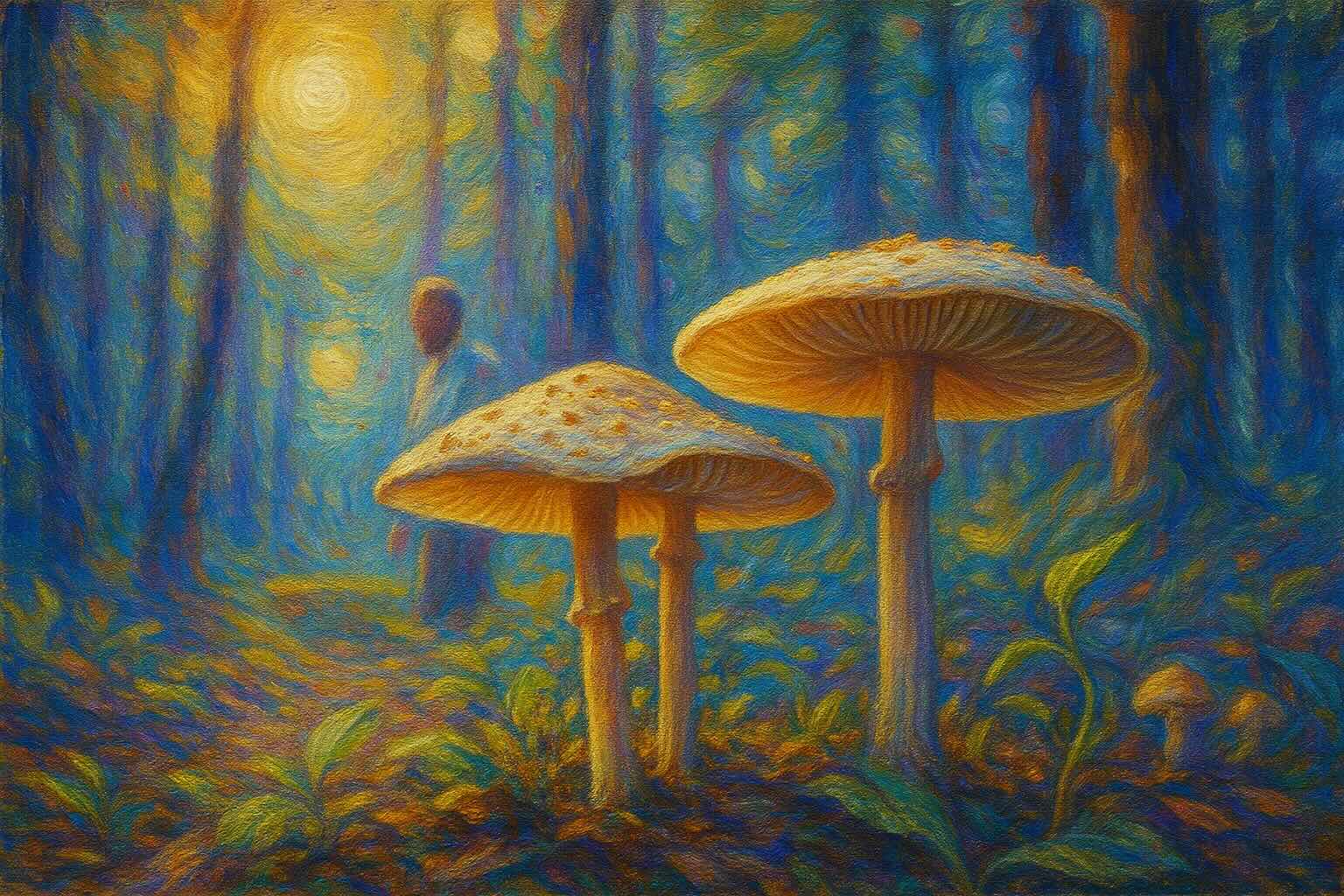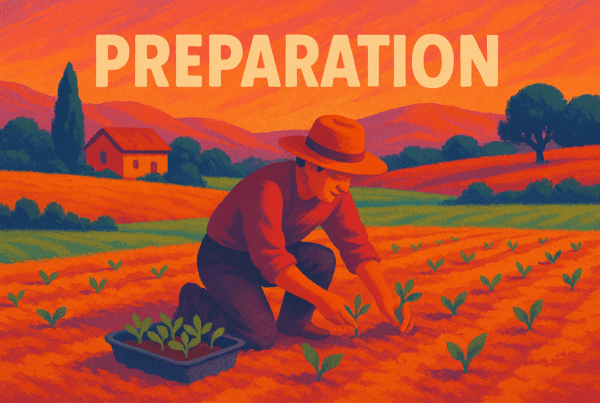
In the years proceeding the pandemic, the FDA designated psilocybin, the active ingredient in “magic mushrooms,” a Breakthrough Therapy for the indications of treatment-resistant depression (TRD) and major depressive disorder (MDD), respectively. This designation is meant to allow expedited development and review of drugs intended to treat serious conditions based on preliminary clinical evidence that indicates it may demonstrate substantial improvement over current available therapy.1
While the FDA and pharmaceutical companies race to get a psilocybin-like product approved, Oregon and Colorado legalized the use of psilocybin, within a regulated framework under the supervision of licensed facilitators. In these programs, no diagnosis is necessary.
But what evidence exists that psilocybin can treat depression? And how does it work?
This article attempts to answer those questions by reviewing available research. I link out to academic papers and researcher interviews, as applicable.
Clinical Trials and Findings
Clinical trials have shown that psilocybin can lead to significant and rapid reductions in depressive symptoms. The antidepressant effects of psilocybin can be long-lasting, with some studies showing a sustained reduction in symptoms for up to a year after treatment. 2
In one study, psilocybin was compared to escitalopram (Lexapro), a common Selective Serotonin Reuptake Inhibitor (SSRI) antidepressant. The study found no significant difference between the two groups in terms of depression scores after six weeks of treatment, though psilocybin may work more rapidly.3
Facilitated psilocybin treatment has also been shown to be effective in people with treatment-resistant depression as well as depression caused by the emotional distress related to life illness.3 Research suggests that psilocybin can help people feel more connected, experience a sense of ego dissolution, and have improved personal meaning and spiritual significance.4
Some studies have found that the intensity of the mystical or insightful experiences during the psilocybin session is correlated with more positive outcomes.5 (Learn more about the Mystical Experience Questionnaire and take it here.)
How Psilocybin Works
There is no doubt that psilocybin can significantly alter perceptions, evoking experiences in consciousness that many study participants consider to be among the most personally meaningful and spiritually significant experiences of their lives. In addition, these experiences produced positive changes in attitudes, mood, altruism, behavior, and life satisfaction, according to questionnaires administered up to a year afterwards.6
However, beyond the psychedelic journey, there is also mounting evidence that psilocybin fundamentally changes the brain. Said another way, the antidepressive effectiveness of psilocybin goes beyond the experiences it creates; the chemistry of the brain changes. Psychiatrists would say that it is likely both the phenomenological and the nuero-chemical effects of psilocybin that create their antidepressive properties.
Bear with us as we get a bit into the pharmacology of psilocybin here.
Psilocybin is found naturally in many varieties of mushrooms. The body converts psilocybin into psilocin, a serotonin receptor agonist, which means it activates serotonin receptors. Psilocin primarily activates the 5-HT2A receptors, which are part of a pathway implicated in depression.7 This activation leads to neuroplasticity, which is the brain’s ability to form new connections and pathways. The brain’s capacity for neuroplasticity is improved by increasing the number of connections in the brain and, in particular, the growth of new dendritic spines.4
Psilocybin may also work by normalizing hyperactivity in the medial prefrontal cortex (mPFC), which is often seen in depressed individuals.7 It also appears to decrease blood flow in the amygdala, an area of the brain that is hyperactive in depression and is involved in processing emotions.8 It may also increase connectivity between the brain’s salience and executive networks while reducing activity within the default mode network (DMN). The DMN is associated with self-referential thought and rumination, which are common in depression.5
Psilocybin has also been shown to increase the concentrations of both dopamine and serotonin, which are neurotransmitters that regulate emotions and physical well-being. In contrast to SSRIs, which can reduce emotional responses, psilocybin may increase amygdala activation to positive emotional stimuli.9
Treatment and Dosage
In most clinical trials, psilocybin treatment for depression typically involves a structured approach with specific elements designed to maximize therapeutic benefits and minimize potential risks. The treatment is not just about taking the substance; it includes preparation, a guided experience, and post-session integration.
Preparation
Prior to a psilocybin session, individuals often undergo several hours of preparation to build rapport with the facilitator(s) who will be present. This helps build trust and ensures the individual feels comfortable and safe. The preparation may include discussions about what to expect during the psilocybin experience, as well as setting intentions for the treatment.
Psilocybin Administration Session
Psilocybin is taken orally. In the research setting, it’s typically in capsule form, either as synthetic psilocybin or sometimes in the form of psilocybin mushrooms.
During the session, individuals are often encouraged to lie down or sit comfortably in a quiet space, frequently with an eye mask and headphones. Music is often played to help guide the experience and match the psilocybin journey. Facilitators are present to provide support, ensure safety, and help the individual navigate the experience.
The session usually lasts for about 6 hours, with the peak effects occurring around 2-3 hours after ingestion. The effects of psilocybin usually become detectable within 30-60 minutes after dosing.
The individual is encouraged to focus their attention inward and stay with whatever experiences arise.
Dosage
The dosage varies, but commonly ranges from 10 to 30 mg of psilocybin. This can also be expressed as 1 to 3 grams of dried psilocybin mushrooms based on a 1% conversion rate. Some studies suggest that a higher dose may lead to better results.2
However, psilocybin concentration can vary wildly based on different mushrooms strains and cultivation techniques. Some laboratories have tested concentrations between 0.5% to 2%. This means that some mushrooms may contain half the amount of psilocybin as others, or twice the amount.4 It is vital to have psilocybin concentration of mushrooms tested to understand dosage. Mushrooms and products administered in state regulated programs (discussed below) are required to be tested for potency and safety.
Early studies often adjusted dosage based on weight. However, most current research studies use fixed doses of psilocybin based on recent data. Additionally, there is an understanding that psilocybin’s effects are primarily on the brain, and brain size does not vary significantly between individuals.10
Post-Session Integration
Following the psilocybin administration session, integration sessions are conducted to help the individual process the thoughts, feelings, and insights gained during the experience. These integration sessions are important for translating the experience into lasting positive changes.
Adverse Effects and Considerations
Psilocybin is generally considered safe when administered in a controlled clinical setting, but it can cause some temporary side effects. These may include anxiety, nausea, headaches, confusion, and thought disorder.15
“Bad trips” can occur in uncontrolled settings and may lead to distress, fear, paranoia, and other negative experiences including short-term characteristics of schizophrenia. In clinical trials, a “bad trip” is typically treated with benzodiazepines.
It is very important to avoid combining psilocybin with other drugs, especially antidepressants, without medical supervision. People taking SSRIs may need to abstain from them for some time before taking psilocybin. It is best practice for facilitators to review medical, psychiatric, and medication history during preparation sessions.
Psilocybin has a low potential for addiction and physical dependence.11
Legally Accessing Psilocybin in Oregon and Colorado
Oregon rolled out a regulated program to access psilocybin under facilitator supervision in 2023. The state issues licenses for facilitators, service centers, cultivators, product producers, and testing laboratories creating a legal pathway for participants to use psilocybin in a therapeutic setting.
Colorado passed similar legislation in 2022 and started accepting license applications in January of 2025. The first Healing Centers in Colorado are expected to open in Q2 of 2025.
These state programs have implemented rules drawn from the best practices described in clinical research, as informed by the historical use of psilocybin. State rules ensure that facilitators receive proper training to work with different types of individuals, administer lab-tested psilocybin products, and work within safe and controlled environments.
Althea connects those seeking psilocybin services with licensed facilitators in compliance with these state regulated programs based upon a participant’s goals and preferences. Some facilitators specialize in working with participants struggling with depression and may also have other applicable clinical licenses. Learn more about the process here. Or, if you’re ready to meet with a facilitator, complete this questionnaire.
Important Note: Information about psilocybin and its therapeutic use is still being researched, and this information is not intended to be medical advice. Consult with a clinical facilitator or other qualified healthcare professional for any decisions related to medical treatment.
References
- The Promise of Therapeutic Psilocybin: An Evaluation of the 134 Clinical Trials, 54 Potential Indications, and 0 Marketing Approvals on ClinicalTrials.gov
- Psychotherapy with Psilocybin for Depression: Systematic Review
- Trial of Psilocybin versus Escitalopram for Depression
- How Psilocybin Can Rewire Our Brain, Its Therapeutic Benefits & Its Risks
- Psilocybin, an Effective Treatment for Major Depressive Disorder in Adults – A Systematic Review
- Mystical-type experiences occasioned by psilocybin mediate the attribution of personal meaning and spiritual significance 14 months later
- Psilocybin with psychological support for treatment-resistant depression: an open-label feasibility study
- Esketamine and Psilocybin-The Comparison of Two Mind-Altering Agents in Depression Treatment: Systematic Review
- The Therapeutic Potential of Psilocybin
- Dr. Matthew Johnson: Psychedelics for Treating Mental Disorders
- Effects of Psilocybin-Assisted Therapy on Major Depressive Disorder: A Randomized Clinical Trial
Find a Licensed Facilitator who Specializes in Treating Depression
There are over 300 licensed facilitators in Oregon and hundreds more about to be licensed in Colorado. Each facilitator brings a personalized approach.
We’ll help you find the right one for you.





